Hello all,
Today I will continue my overview of the Hutsul region by talking about the Rakhiw region. For an overview of the Hutsuls, see part 1 of this series. Together with the Nadvirna region, the Rakhiw region forms western Hutsulshchyna. The Rakhiw region lies in the upper Tisa river valley, including its tributaries, and also includes the villages of Kobylets'ka Polyana, Rosis'ka Polyana and Rosishka, which lie off to the west by themselves, but not the village of Dilove, which lies in the Maramuresh costume region. It does, however, include the villages of Yablunytsia, Voronenko and Vorokhta which lie just over the border in Ivano-Frankiwsk Oblast on the very highest parts of the Prut river valley. We are fortunate in that this region was often visited by Czech photographers, and we have their work.
There is much commonality between the Nadvirna and Rakhiw regions, the main distinguishing element being the kyptar. Also, in the material that has been collected, there is much greater variety in the embroidery of the Rakhiv region.
The basic garment for the women is the chemise, in the shoulder inset [ustawka] cut. The ustawka is sewn to the sides of the body field as in Pokuttia, Podillia and Bukovyna, not the top, as in Halychyna and Boikiwshchyna. There is embroidery on the collar, cuffs, front opening, and shoulder inset. The bottom hem is NOT embroidered, except perhaps with some white hemstitching. The sleeve itself, as in all of Western Hutsulshchyna is also not embroidered. There is a gusset in the armpit, and a gore added to the sides for ease of movement. The front and back body fields are rectangular, this drawing is misleading. The ustawky and body fields are smock gathered into the collar.
If you look carefully at the images above, you can see that the sleeves are gathered partway around into the cuffs, often with the distinctive zigzag gather used by the Hutsuls.
Even the simple chemises of coarse linen or hemp meant for everyday wear had at least a narrow stripe of embroidery on the shoulder. Here are some schoolchildren from the village of Bohdan.
Unmarried girls braided their hair, and left it uncovered, unless the weather was cold.
The kyptar, or sheepskin vest, was of two types. One, for everyday, was very plain, ornamented only with lambskin around the openings. Outerwear, for Hutsuls was generally the same for men and women, differing only in size.
More commonly the kyptar was highly ornamented, as it was in the other parts of Hutsulshchyna. The kyptar of this region is immediately recognizable.
The cut is somewhat shorter than in other regions. There is always a 3 branched floral motif embroidered in the front bottom corners. There is an ornamented rectangle along the upper part of the front opening, with rows of braid stitch, rows of interlaced leather, patchwork of fleece and fur, tassels, etc. The side of this rectangle is ornamented with wide, stubby, downward curving tooth designs. The front pocket flap is decorated. The bottom edge is ornamented with various embroidered designs on the sides and back. The outside edge often has no, or a very narrow lambskin border. Colored tassels may hang in front and down the back.
These images show keptars from Yasinya,
The 3 branched floral motif in the bottom front corner is universal in this region.
As the men in this region were subject to service in the Austro-Hungarian army, these were relatively early replaced by military style jodphurs. Still later, sometimes by city style pants. With these, the shirts were sometimes tucked in, city style. Either of these were sometimes worn with boots. More examples from Yasinya.
Men often wear wide to very wide belts, called cheres, which are also worn by men throughout the Carpathians. Otherwise striped sashes were worn.
Men wear felt or sheepskin hats, perhaps straw hats in the summer. The felt hats often looking very Austrian, but being found in various shapes.
Some images from the village of Lazeshchyna.
In this image, the men are wearing Hutsul costume, but the women are wearing Maramorosh costume. This photo might then be from the villages of Dilove or Kruhlyj.
Thank you for reading. I hope that you have found this to be interesting and informative. I will be describing the embroideries in the next article.
Roman K
email: rkozakand@aol.com
Source Material:
Vasyl and Tetiana Kosan', "My Vyshyvanka is Close to My Heart" Uzhhorod, 2023
S. Makovski, 'L'arte Populaire en Russie Subcarpathiquie', Prague, 1926
F. J. Spala, 'Podkarpatske Vysivky', Prague
K. I. Matejko, 'Ukrajinskyj Narodnyj Odjah', Kyjiw, 1977
V. H. Bilozub et al, "'Ukrainian Folk Art - Weaving and Embroidery', Kyjiw, 1960
V. H. Bilozub et al, 'Ukrainian Folk Art - Clothing', Kyjiw, 1961
O. I. Kubajevych et al, 'Derzhawnyj Muzej Etnohrafiji TA Khudozhn'oho AN URSR', Kyjiw 1976




































.jpg)







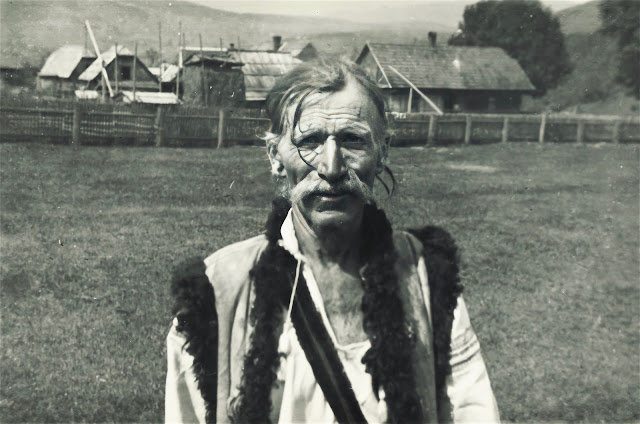





































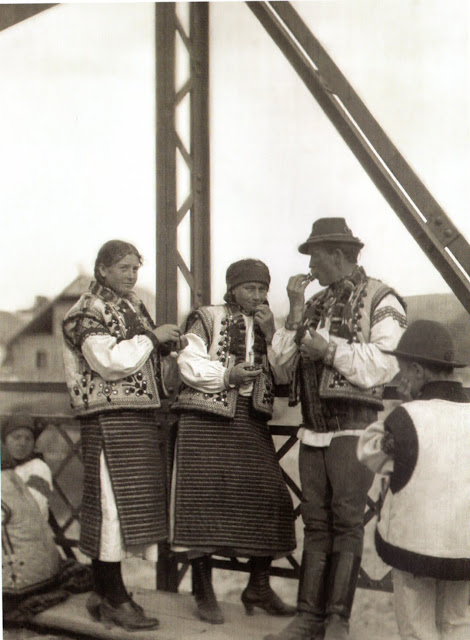



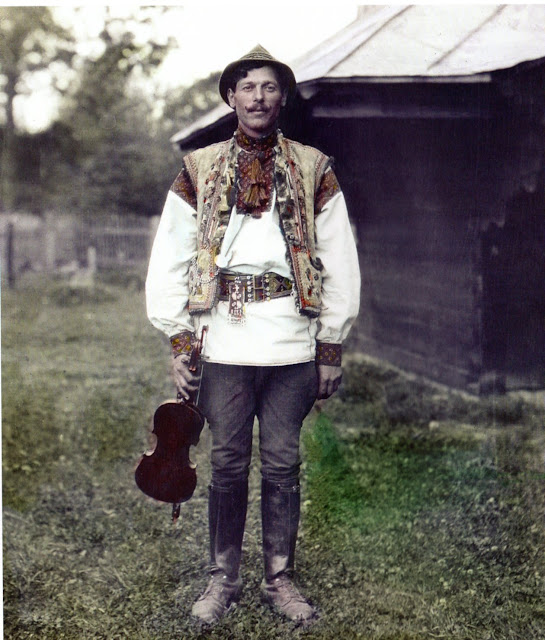

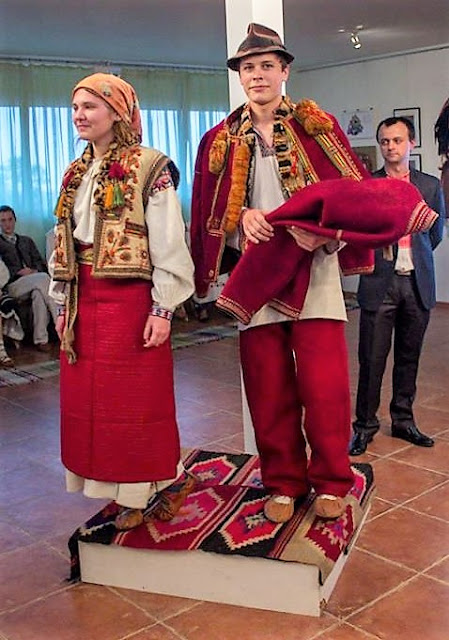





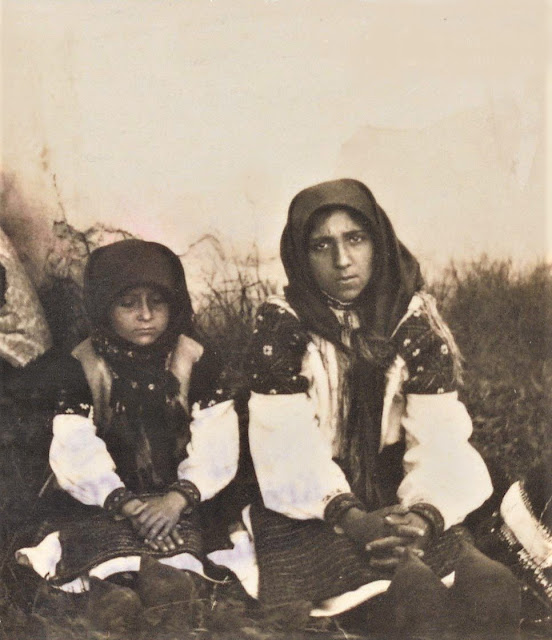








































%20,%20%D0%B2%D0%B5%D1%80%D0%B5%D1%81%D0%B5%D0%BD%D1%8C%201934%20%D1%80.jpg)
.jpg)
.jpg)
.jpg)






